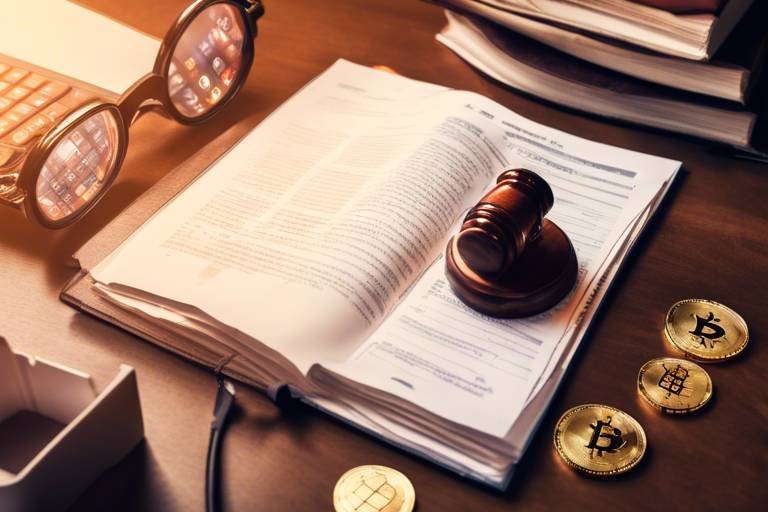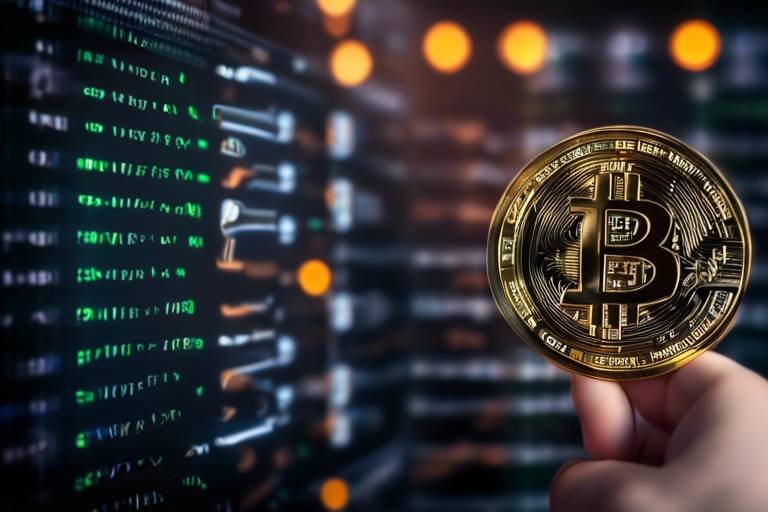How to Address Legal Challenges in Crypto Asset Custody
The world of cryptocurrency is like a thrilling roller coaster ride—full of twists, turns, and unexpected drops. As the popularity of digital assets skyrockets, so do the legal challenges tied to their custody. Navigating this complex landscape requires more than just a basic understanding of crypto; it demands a deep dive into regulatory compliance, risk management, and best practices. In this article, we'll explore how custodians can effectively address these legal challenges and safeguard digital assets in a rapidly evolving environment.
So, what exactly is crypto asset custody? In simple terms, it refers to the safekeeping of cryptocurrencies and other digital assets. Custodians play a crucial role in this process, acting as trusted third parties responsible for holding and managing these assets securely. Think of custodians as the vaults of the digital currency world—just as banks protect your money, custodians ensure that your crypto is safe from theft, loss, or mismanagement. Given the volatile nature of cryptocurrencies, having a secure storage solution is not just important; it's absolutely essential for anyone looking to invest in this space.
As the crypto market continues to mature, regulators around the globe are stepping in to create frameworks that govern its operations. This regulatory environment can feel like a minefield, with various laws and compliance requirements that custodians must navigate. From Anti-Money Laundering (AML) to Know Your Customer (KYC) protocols, understanding these regulations is key to operating legally and effectively. Ignoring them could lead to severe penalties, including hefty fines or even the loss of operational licenses.
When it comes to crypto asset custody, several regulations are particularly relevant. Let's break down a couple of the most significant ones:
- AML Compliance: Custodians must implement robust measures to prevent money laundering activities. This includes thorough risk assessments and reporting any suspicious transactions.
- KYC Procedures: Know Your Customer protocols require custodians to verify the identities of their clients. This is crucial for maintaining compliance and ensuring that the custodians are not facilitating illegal activities.
Anti-Money Laundering regulations are designed to combat illicit financial activities. For custodians, this means establishing a comprehensive AML program that includes:
- Risk assessments to identify potential vulnerabilities.
- Ongoing monitoring of transactions.
- Reporting suspicious activities to the relevant authorities.
By adhering to these requirements, custodians not only comply with the law but also build trust with their clients.
Know Your Customer protocols are another critical aspect of crypto asset custody. These procedures involve verifying the identities of clients before engaging in any transactions. Custodians typically require clients to provide:
- Government-issued identification.
- Proof of address.
- Additional information to assess the risk associated with the client.
Implementing effective KYC measures helps custodians mitigate risks and maintain compliance with regulatory standards.
The jurisdiction in which a custodian operates can significantly influence their practices and obligations. Different countries have varying regulatory frameworks, which can complicate compliance for custodians operating in multiple regions. For instance, a custodian in the United States may face stricter regulations compared to one in a more lenient jurisdiction. Understanding these nuances is vital for custodians to avoid legal pitfalls and ensure they are meeting all necessary requirements.
With the legal landscape constantly shifting, custodians must adopt effective risk management strategies to protect themselves and their clients. This involves not only understanding the regulations but also implementing robust security measures.
Insurance coverage for crypto assets is becoming increasingly important. Different insurance products are available to custodians, offering protection against potential losses due to theft, fraud, or operational failures. Having a comprehensive insurance policy can provide peace of mind and protect the custodian's assets and reputation.
Technological measures are also essential in enhancing the security of crypto assets. Custodians can implement solutions like multi-signature wallets and cold storage to safeguard against theft and breaches. Multi-signature wallets require multiple approvals for transactions, adding an extra layer of security. Cold storage, on the other hand, keeps assets offline, making them less vulnerable to cyber attacks.
To ensure compliance, security, and operational efficiency, custodians should follow a set of best practices. This includes conducting regular audits to assess compliance and security measures, ensuring that they maintain high standards in their operations. Regular audits help custodians identify potential weaknesses and rectify them before they become serious issues.
Ongoing training and awareness programs for staff are crucial in the rapidly evolving crypto landscape. Keeping employees updated on legal requirements and security protocols not only enhances compliance but also fosters a culture of vigilance and responsibility within the organization.
Q: What is crypto asset custody?
A: Crypto asset custody involves the safekeeping and management of cryptocurrencies and digital assets by custodians, who act as trusted third parties.
Q: Why is regulatory compliance important for custodians?
A: Regulatory compliance is essential to avoid legal penalties and build trust with clients. Non-compliance can lead to fines or loss of operational licenses.
Q: What are AML and KYC?
A: AML (Anti-Money Laundering) refers to regulations designed to prevent illicit financial activities, while KYC (Know Your Customer) protocols require custodians to verify the identities of their clients.
Q: How can custodians mitigate risks?
A: Custodians can mitigate risks by implementing effective insurance solutions, utilizing technological safeguards, and conducting regular audits.

Understanding Crypto Asset Custody
In the rapidly evolving world of cryptocurrency, crypto asset custody has become a critical aspect for investors, institutions, and custodians alike. But what exactly does it mean? At its core, crypto asset custody refers to the secure storage and management of digital assets, such as Bitcoin, Ethereum, and other cryptocurrencies. Just like a bank holds your physical money, custodians are responsible for safeguarding these digital assets, ensuring that they are protected from theft, loss, or mismanagement.
The role of custodians is multifaceted. They not only store the assets securely but also provide essential services such as transaction management, compliance with regulatory requirements, and risk assessment. With the increasing value and popularity of cryptocurrencies, the need for reliable custody solutions has never been more urgent. Custodians act as a bridge between the digital asset world and traditional financial systems, offering a sense of security and trust to investors who may be wary of the inherent risks involved in holding cryptocurrencies directly.
One of the primary reasons why secure storage solutions are vital in the cryptocurrency ecosystem is the volatile nature of these assets. Prices can swing dramatically within short periods, leading to potential losses if not managed properly. Additionally, the threat of cyberattacks looms large, with hackers continuously seeking vulnerabilities in the systems of exchanges and wallets. Therefore, custodians must implement robust security measures to protect against unauthorized access and ensure the integrity of the assets they manage.
To help you understand the importance of crypto asset custody better, consider this analogy: think of custodians as the digital vaults of cryptocurrency. Just as you would choose a bank with a solid reputation and advanced security measures to safeguard your money, selecting a trustworthy custodian is crucial for protecting your digital assets. A good custodian will employ a combination of technological advancements and regulatory compliance to provide a safe and efficient storage solution.
In conclusion, understanding crypto asset custody is essential for anyone looking to invest in or manage digital assets. It’s not just about owning cryptocurrency; it’s about ensuring that your investments are secure, compliant, and managed by professionals who understand the complexities of this ever-changing landscape. As the cryptocurrency market continues to mature, the role of custodians will only become more significant, paving the way for a safer and more regulated environment for digital assets.
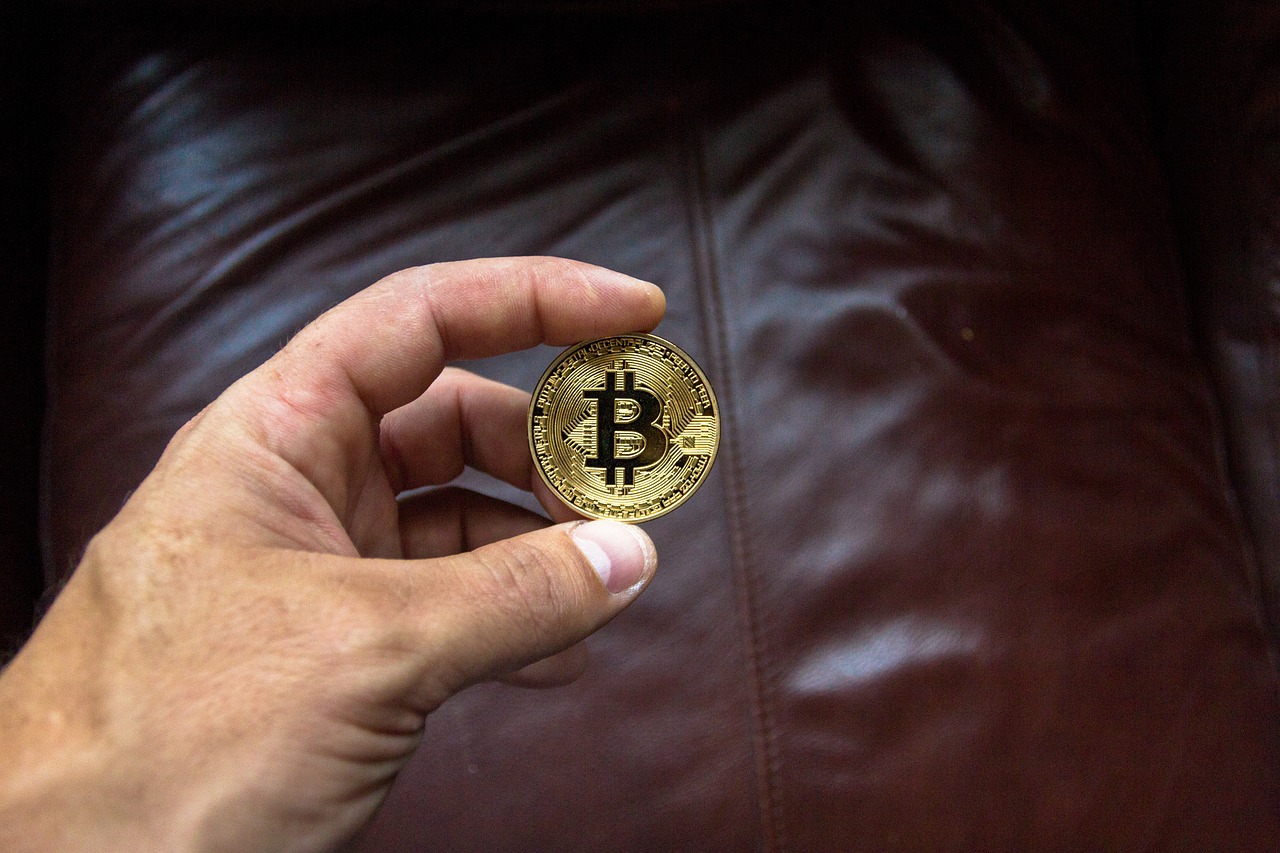
Regulatory Landscape
The world of cryptocurrency is like a wild west, filled with opportunities but also fraught with challenges, especially when it comes to legal compliance. Understanding the surrounding crypto asset custody is crucial for custodians who want to operate effectively and legally. As the cryptocurrency market continues to expand, regulatory bodies across the globe are scrambling to catch up, creating a complex web of laws and guidelines that custodians must navigate. This landscape is not only dynamic but also varies significantly from one jurisdiction to another, making it essential for custodians to stay informed and adaptable.
At the heart of this regulatory framework are key regulations that custodians need to be aware of, such as Anti-Money Laundering (AML) and Know Your Customer (KYC) requirements. These regulations are designed to prevent illicit activities and ensure that custodians are doing their due diligence in verifying the identities of their clients. Failure to comply with these regulations can lead to severe penalties, including hefty fines and even criminal charges. It’s like walking a tightrope; one misstep can have dire consequences.
To give you a clearer picture, let’s break down some of the critical components of the regulatory landscape:
| Regulation | Description | Implications for Custodians |
|---|---|---|
| AML | Anti-Money Laundering laws require custodians to monitor transactions and report suspicious activities. | Custodians must implement robust monitoring systems to detect and report potentially illegal activities. |
| KYC | Know Your Customer regulations necessitate verifying the identities of clients before providing services. | Custodians must develop thorough onboarding processes to collect and verify customer information. |
| Data Protection | Regulations like GDPR mandate the protection of personal data collected from clients. | Custodians must ensure they have adequate data protection measures in place to comply with privacy laws. |
As you can see, the implications of these regulations are far-reaching. Custodians not only need to implement compliance measures but also continuously update them as regulations evolve. It's a bit like maintaining a car; regular check-ups and updates are necessary to keep everything running smoothly. Moreover, custodians must also be aware of the legal requirements in different jurisdictions, as what is acceptable in one country may be illegal in another.
In conclusion, the regulatory landscape for crypto asset custody is complex and constantly changing. Custodians must remain vigilant and proactive in their compliance efforts, ensuring they are not only meeting current requirements but also anticipating future changes. This vigilance will help them build trust with their clients and regulators alike, positioning them for success in this exciting yet challenging industry.
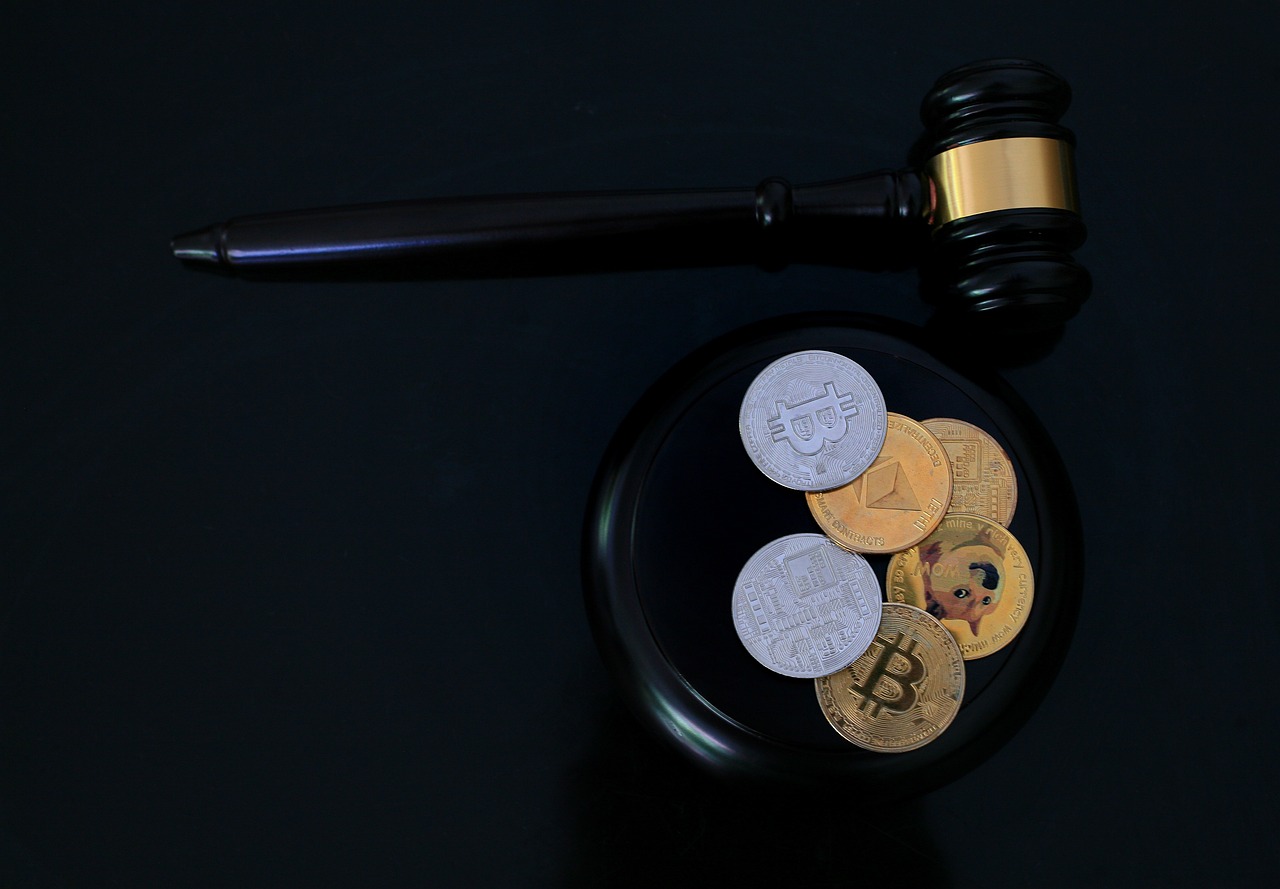
Key Regulations to Consider
When it comes to crypto asset custody, understanding the key regulations is not just a good idea; it's essential for survival in this dynamic landscape. The regulatory environment is constantly evolving, and custodians must stay ahead of the curve to avoid potential pitfalls. One of the most significant regulations impacting custodians is the Anti-Money Laundering (AML) legislation. This set of rules requires custodians to implement stringent measures to prevent illicit activities, such as money laundering and terrorist financing. Failure to comply can result in hefty fines and damage to reputation, which can be detrimental in the competitive world of crypto.
Another critical regulation is Know Your Customer (KYC), which mandates that custodians verify the identities of their clients. This process not only helps in preventing fraud but also ensures that custodians are aware of the risks associated with their clientele. KYC procedures typically involve collecting personal information, such as names, addresses, and identification documents. It's a necessary evil that custodians must embrace to operate legally and maintain trust with their users.
To give you a clearer picture, here’s a quick overview of how these regulations interact with custodial practices:
| Regulation | Purpose | Custodian Obligations |
|---|---|---|
| AML | Prevent illicit activities | Implement monitoring systems and report suspicious activities |
| KYC | Verify customer identities | Collect and verify personal information |
Moreover, custodians must also keep an eye on international regulations, as the crypto landscape is global and varies significantly by jurisdiction. Different countries have different approaches to crypto regulation, which can affect how custodians operate. For instance, some jurisdictions may have lax regulations, while others impose strict compliance requirements. This discrepancy can create challenges for custodians who operate across borders, as they must navigate multiple regulatory frameworks while ensuring compliance in each region.
In essence, the regulatory landscape is a double-edged sword. On one side, it provides a framework for safe and secure crypto asset custody, fostering trust among users. On the other, it poses challenges that custodians must diligently manage. As the crypto world continues to grow, staying informed and adaptable to these regulations will be crucial for custodians aiming to thrive in this space.
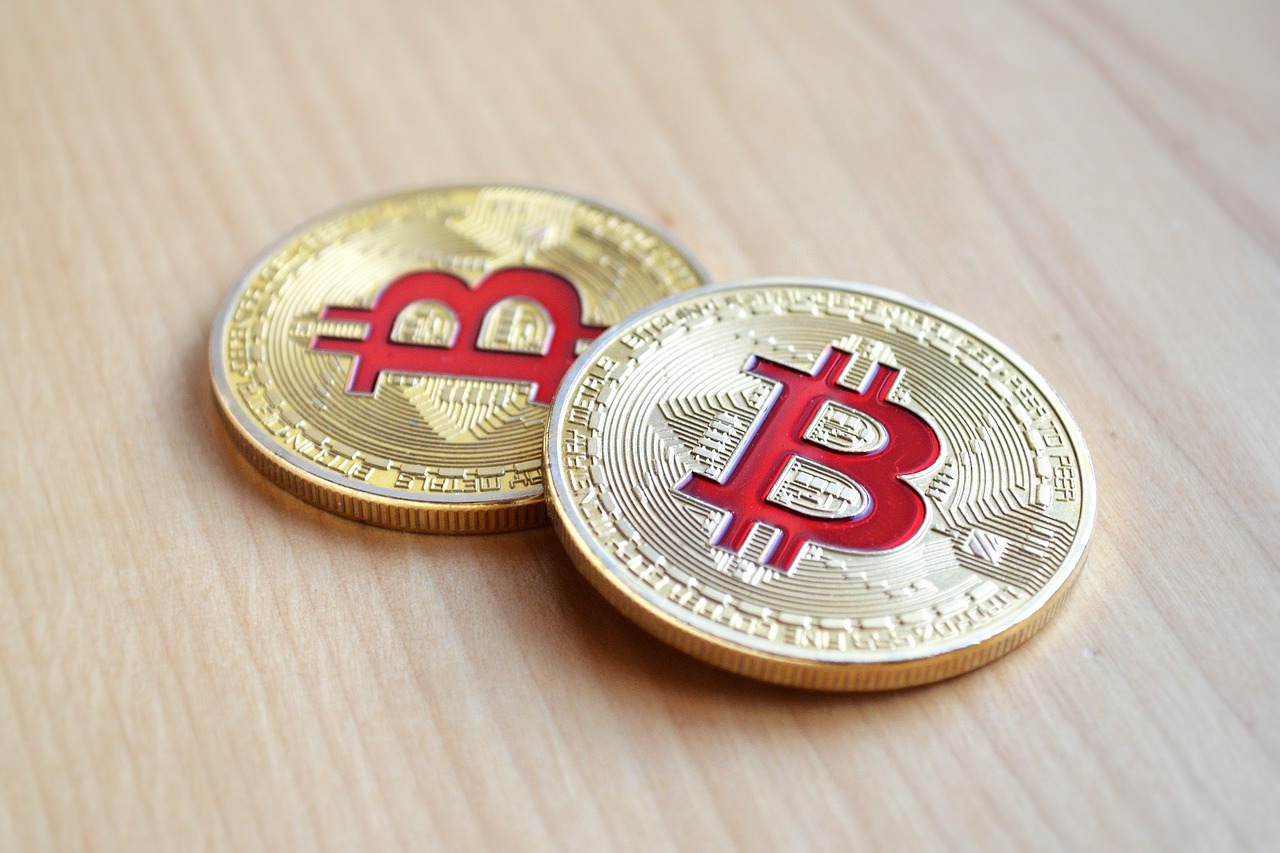
AML Compliance
When it comes to the world of crypto asset custody, Anti-Money Laundering (AML) compliance is not just a regulatory checkbox; it’s a fundamental pillar that custodians must uphold to maintain trust and integrity in the market. Imagine being a custodian without AML measures in place—like a ship sailing without a compass in uncharted waters. The risk of navigating through illicit activities is immense, and the consequences can be devastating, not only for the custodian but also for their clients.
AML compliance requires custodians to implement a series of robust procedures designed to detect and prevent money laundering activities. This isn’t a one-size-fits-all approach; rather, it involves a tailored strategy that considers the unique characteristics of the cryptocurrency ecosystem. For instance, custodians must perform due diligence when onboarding clients, which involves verifying their identities and understanding the nature of their transactions. This is where the concept of risk-based assessment comes into play, allowing custodians to allocate their resources effectively based on the perceived risk associated with each client.
To comply with AML regulations, custodians typically follow a structured process that includes:
- Client Identification: Collecting necessary documentation to verify the identity of clients, such as government-issued IDs or utility bills.
- Transaction Monitoring: Continuously monitoring transactions for suspicious activities, such as unusually large deposits or withdrawals.
- Reporting Obligations: Reporting any suspicious activities to the relevant authorities, which can include filing Suspicious Activity Reports (SARs).
Moreover, custodians must maintain detailed records of all transactions and client interactions. This documentation serves a dual purpose: it not only aids in compliance but also acts as a protective measure in case of audits or investigations. Think of it as a safety net that ensures custodians can demonstrate their commitment to AML compliance at any moment.
In addition to these procedures, custodians should also invest in technology solutions that enhance their AML efforts. For example, advanced analytics and machine learning algorithms can help identify patterns indicative of money laundering, making it easier to flag suspicious activities in real-time. By leveraging technology, custodians can stay one step ahead of potential threats, ensuring that their operations remain secure and compliant.
Ultimately, AML compliance is not just about avoiding penalties; it’s about fostering a culture of integrity and accountability within the crypto asset custody space. As custodians navigate this complex landscape, they must recognize that their efforts contribute to the overall legitimacy and sustainability of the cryptocurrency market. By prioritizing AML compliance, custodians can build trust with clients and regulators alike, paving the way for a more secure and prosperous future in digital asset management.
Q1: What is AML compliance in crypto asset custody?
A1: AML compliance refers to the set of regulations and procedures that custodians must follow to prevent money laundering activities. This includes client verification, transaction monitoring, and reporting suspicious activities.
Q2: Why is AML compliance important?
A2: AML compliance is crucial for maintaining the integrity of the cryptocurrency market. It helps protect custodians from legal repercussions and builds trust with clients and regulators.
Q3: How can custodians ensure effective AML compliance?
A3: Custodians can ensure effective AML compliance by implementing robust procedures, investing in technology solutions, and conducting regular training for their staff to stay updated on regulatory requirements.
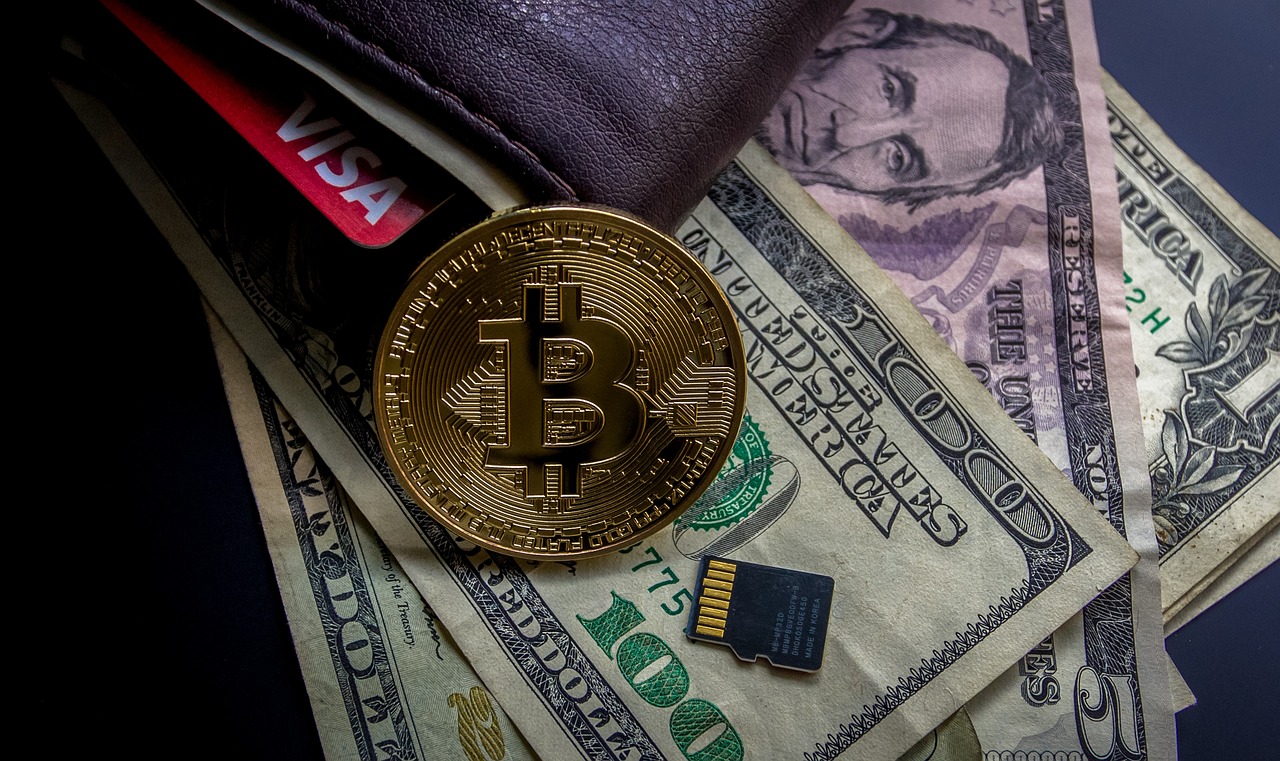
KYC Procedures
Know Your Customer (KYC) procedures are a fundamental aspect of crypto asset custody that custodians must implement to ensure compliance with regulatory standards. These procedures are not merely bureaucratic red tape; rather, they serve as a protective shield, safeguarding both the custodian and the clients from potential legal repercussions and fraudulent activities. Imagine KYC as the gatekeeper of a castle, ensuring that only legitimate patrons can enter and enjoy the riches within.
At its core, KYC involves verifying the identities of clients before they can engage in transactions or hold crypto assets. This process typically includes collecting personal information such as the client's name, address, date of birth, and identification documents. But it's not just about gathering data; it’s about establishing trust. By knowing who your clients are, custodians can mitigate risks associated with money laundering, terrorist financing, and other illicit activities. In fact, regulatory bodies around the globe mandate these procedures, making them indispensable in the crypto landscape.
There are several key steps involved in the KYC process:
- Client Identification: This initial step requires custodians to collect and verify identity documents, such as passports or driver's licenses, to confirm the client's identity.
- Risk Assessment: Custodians must assess the risk associated with each client based on various factors, including their geographical location and transaction history.
- Ongoing Monitoring: KYC is not a one-time event. Custodians must continuously monitor clients’ transactions to identify any suspicious activities that may arise over time.
Implementing KYC procedures can be complex, especially in the rapidly changing world of cryptocurrency. However, custodians can leverage technology to streamline these processes. For instance, many custodians now use automated KYC solutions that employ artificial intelligence to analyze documents and verify identities quickly and accurately. This not only saves time but also enhances the overall security of the custody service.
Moreover, custodians must stay updated on the evolving regulatory landscape surrounding KYC. Regulations can differ significantly from one jurisdiction to another, and custodians operating in multiple regions must navigate these complexities carefully. Failing to comply with KYC regulations can lead to severe penalties, including hefty fines and reputational damage.
In conclusion, KYC procedures are a critical component of crypto asset custody. They protect not only the custodians but also the integrity of the entire cryptocurrency ecosystem. By implementing robust KYC processes, custodians can ensure they are compliant with legal requirements while fostering a secure environment for their clients.
1. Why are KYC procedures important in crypto asset custody?
KYC procedures are essential for verifying client identities, preventing fraud, and ensuring compliance with regulatory requirements. They help custodians mitigate risks associated with financial crimes.
2. What documents are typically required for KYC?
Commonly required documents include government-issued identification (like a passport or driver's license), proof of address (such as a utility bill), and sometimes additional information depending on the jurisdiction.
3. How often should KYC procedures be updated?
KYC procedures should be reviewed and updated regularly, especially when there are changes in a client's behavior or if new regulations are introduced. Ongoing monitoring is crucial.
4. Can technology assist in KYC processes?
Yes, many custodians are adopting automated KYC solutions that utilize artificial intelligence and machine learning to streamline the verification process, making it faster and more secure.

Impact of Jurisdiction
The on crypto asset custody cannot be overstated. Different regions have varying regulatory frameworks that can significantly influence how custodians operate. For instance, what is permissible in one country may be heavily restricted in another, creating a complex web of compliance requirements. This disparity can lead to confusion and operational challenges for custodians who are trying to navigate the global landscape of digital asset management.
When custodians operate in multiple jurisdictions, they must be acutely aware of the local laws and regulations that apply to their services. This includes understanding the nuances of licensing requirements, tax obligations, and reporting standards. For example, in the European Union, the General Data Protection Regulation (GDPR) imposes strict data protection requirements that custodians must comply with, while in the United States, the Securities and Exchange Commission (SEC) has specific guidelines regarding the custody of digital assets.
Moreover, the regulatory environment can change rapidly, making it essential for custodians to stay informed and adaptable. A sudden shift in legislation could render existing practices obsolete or require immediate adjustments to operational procedures. This constant state of flux can create a sense of uncertainty, which is further compounded by the fact that regulatory bodies are still grappling with how to effectively govern the evolving world of cryptocurrencies.
To illustrate the impact of jurisdiction on crypto asset custody, consider the following table that compares key regulatory aspects across different regions:
| Region | Licensing Requirements | Data Protection Laws | Tax Treatment |
|---|---|---|---|
| United States | State-by-state licensing | GDPR applicable in certain states | Capital gains tax on crypto transactions |
| European Union | MiFID II compliance | GDPR | Varies by member state |
| Asia (e.g., Singapore) | License from Monetary Authority of Singapore | Data Protection Act | Favorable tax treatment for crypto |
As you can see from the table, each jurisdiction has its own set of rules and regulations that custodians must navigate. This complexity highlights the need for custodians to invest in robust compliance frameworks and legal expertise to ensure they are not only meeting local requirements but are also prepared for any potential changes in the law. In essence, understanding the impact of jurisdiction is not just about compliance; it’s about strategically positioning oneself in a rapidly evolving market.
In conclusion, the on crypto asset custody is a multifaceted issue that requires careful consideration and proactive management. Custodians who are able to effectively navigate these complexities will not only mitigate legal risks but also enhance their operational efficiency, thereby positioning themselves as trusted players in the crypto landscape.
- What is crypto asset custody? Crypto asset custody refers to the services that securely hold and manage digital assets on behalf of clients, ensuring safety and compliance with regulations.
- Why is jurisdiction important in crypto custody? Jurisdiction determines the legal framework and regulatory requirements that custodians must adhere to, impacting their operations and compliance strategies.
- How can custodians manage jurisdictional risks? Custodians can manage these risks by staying informed about regional regulations, investing in compliance infrastructure, and seeking legal counsel as needed.

Risk Management Strategies
In the world of crypto asset custody, risk management is not just a buzzword; it's a necessity. As custodians navigate the turbulent waters of digital asset storage, they must adopt robust strategies to mitigate both legal and operational risks. Think of it as wearing a life jacket while sailing on unpredictable seas—it's better to be safe than sorry. The complexity of crypto assets, coupled with the ever-evolving regulatory landscape, necessitates a proactive approach to risk management.
One of the most effective strategies custodians can implement is the use of insurance solutions. Just like homeowners insure their properties against unforeseen disasters, custodians should secure insurance coverage specifically tailored for crypto assets. This can include coverage against theft, loss due to hacking, or even operational errors. The table below outlines some common types of insurance products available for custodians:
| Insurance Type | Description |
|---|---|
| Crime Insurance | Covers losses due to theft, fraud, or employee dishonesty. |
| Cyber Insurance | Protects against losses from cyberattacks and data breaches. |
| Professional Liability Insurance | Covers legal claims resulting from errors or omissions in professional services. |
While insurance provides a safety net, it’s equally important for custodians to implement technological safeguards. In an era where cyber threats are rampant, leveraging advanced technologies can significantly enhance the security of crypto assets. Multi-signature wallets, for instance, require multiple private keys to authorize a transaction, making unauthorized access nearly impossible. Additionally, cold storage solutions, which keep assets offline, are a fortress against online threats. Imagine locking your valuables in a safe rather than leaving them out in the open; this analogy perfectly encapsulates the importance of cold storage in safeguarding digital assets.
Moreover, custodians should regularly assess their risk management strategies through comprehensive audits. These audits not only evaluate compliance with regulatory standards but also identify potential vulnerabilities in security protocols. Regular audits act as a health check for the custodial operations, ensuring that all systems are functioning optimally and that any emerging risks are promptly addressed.
Finally, it's crucial for custodians to foster a culture of training and awareness among their staff. In a rapidly changing industry like cryptocurrency, ongoing education is vital. Staff members should be well-versed in the latest legal requirements and security protocols. By investing in training programs, custodians can empower their teams to recognize and respond to potential risks effectively, thereby creating a more secure environment for digital asset management.
In conclusion, effective risk management strategies in crypto asset custody are multifaceted, involving a combination of insurance, technology, regular audits, and staff training. By prioritizing these strategies, custodians can navigate the complexities of the crypto landscape with confidence, ensuring that they safeguard their clients' digital assets against an array of potential threats.
- What is crypto asset custody? Crypto asset custody refers to the secure storage and management of digital assets, ensuring their safety from theft and loss.
- Why is risk management important in crypto custody? Risk management is crucial to protect against legal and operational risks that can arise due to the volatile nature of cryptocurrencies and regulatory changes.
- What types of insurance are available for custodians? Common types of insurance include crime insurance, cyber insurance, and professional liability insurance, all aimed at protecting against different types of risks.
- How can technology enhance security in crypto custody? Technologies such as multi-signature wallets and cold storage solutions create additional layers of security, making unauthorized access much more difficult.

Insurance Solutions
When it comes to safeguarding crypto assets, play a pivotal role in providing custodians with a safety net against potential losses. The volatile nature of the cryptocurrency market means that assets can be at risk from various threats, including hacking, fraud, and operational errors. Therefore, having the right insurance coverage is not just a luxury; it’s a necessity. Think of it like an umbrella on a rainy day—you might not need it all the time, but when the storm hits, you’ll be glad you have it!
There are several types of insurance products available specifically designed for crypto custodians. These can include crime insurance, which protects against losses resulting from theft or fraud, and cyber liability insurance, which covers losses from data breaches and cyberattacks. Additionally, some custodians opt for professional indemnity insurance, which can protect against claims of negligence or failure to perform professional duties. Each of these insurance types addresses different risks, allowing custodians to tailor their coverage to their unique operational needs.
To illustrate the importance of these insurance solutions, let’s take a look at a table summarizing the various types of insurance available for crypto custodians:
| Type of Insurance | Coverage |
|---|---|
| Crime Insurance | Protection against theft, fraud, and employee dishonesty. |
| Cyber Liability Insurance | Covers losses due to data breaches, hacking, and other cyber incidents. |
| Professional Indemnity Insurance | Protection against claims of negligence in professional services. |
| General Liability Insurance | Covers bodily injury and property damage claims. |
Custodians must also be aware of the policy limits and exclusions that come with these insurance products. It’s crucial to thoroughly read the fine print and understand what is covered and what isn’t. For instance, some policies may not cover losses resulting from certain types of cyberattacks, or they might have specific conditions that must be met for a claim to be valid. This is where working closely with an insurance broker who understands the crypto landscape can be invaluable.
In addition to traditional insurance products, some custodians are exploring decentralized insurance solutions that leverage blockchain technology. These innovative approaches can provide coverage through smart contracts, offering a more transparent and potentially more efficient way to manage risk. However, as with any emerging technology, it’s essential to conduct thorough due diligence and understand the risks involved.
Ultimately, the right insurance solutions can significantly enhance a custodian's risk management strategy. By proactively addressing potential vulnerabilities and ensuring adequate coverage, custodians can focus on what they do best—safeguarding their clients’ digital assets—instead of worrying about what could go wrong. Remember, in the world of crypto, it’s better to be safe than sorry!
- What types of insurance should a crypto custodian consider? A custodian should consider crime insurance, cyber liability insurance, and professional indemnity insurance, among others.
- How can custodians assess their insurance needs? Custodians should evaluate their operational risks and consult with an insurance broker experienced in the crypto space.
- Are decentralized insurance solutions reliable? While they offer innovative coverage options, custodians should conduct thorough research to understand the associated risks.

Technological Safeguards
In the ever-evolving world of cryptocurrency, play a pivotal role in ensuring the security and integrity of crypto asset custody. As custodians handle vast amounts of digital assets, implementing robust technological measures is not just a good practice; it’s a necessity. Imagine trying to protect a treasure chest filled with gold coins without a lock—simply unthinkable! Similarly, custodians must equip themselves with advanced technologies to guard against theft and breaches.
One of the most effective technological solutions available today is the use of multi-signature wallets. These wallets require multiple private keys to authorize a transaction, adding an extra layer of security. Think of it as needing several keys to open a vault rather than just one. This way, even if one key is compromised, the assets remain secure as the other keys are still required to access the wallet. Additionally, custodians can implement cold storage solutions, which involve keeping digital assets offline, far removed from the reach of hackers. Cold storage is akin to storing your valuables in a safe deposit box at the bank—safe and sound, away from prying eyes.
Furthermore, custodians should also consider integrating hardware security modules (HSMs) into their operations. HSMs are physical devices that manage and safeguard digital keys, providing a secure environment for cryptographic operations. These devices are designed to resist tampering and unauthorized access, making them an essential component of a custodian's security infrastructure. By utilizing HSMs, custodians can ensure that their encryption keys are stored securely, reducing the risk of data breaches.
Another critical aspect of technological safeguards is continuous monitoring. Custodians should employ advanced monitoring tools that can detect unusual activities in real-time. By establishing a system that alerts them to potential threats, custodians can respond swiftly and mitigate risks before they escalate. This proactive approach is akin to having a security guard who watches over your property 24/7, ready to act at the first sign of trouble.
In addition to these measures, custodians must also prioritize data encryption. Encrypting sensitive data ensures that even if an unauthorized party gains access, the information remains unreadable without the proper decryption keys. This is similar to speaking in a foreign language that only you and your trusted contacts understand—outsiders won’t be able to make sense of it. By employing strong encryption protocols, custodians can significantly enhance their data security.
In conclusion, as the landscape of crypto asset custody continues to evolve, custodians must stay ahead of the curve by implementing comprehensive technological safeguards. By leveraging multi-signature wallets, cold storage, HSMs, continuous monitoring, and robust encryption, custodians can create a fortress around their digital assets. This holistic approach not only protects against potential threats but also instills confidence among clients, ensuring that their assets are in safe hands.
- What are the main technological safeguards for crypto asset custody?
The main safeguards include multi-signature wallets, cold storage, hardware security modules (HSMs), continuous monitoring, and data encryption. - Why is cold storage important?
Cold storage keeps digital assets offline, making them less vulnerable to hacking attempts and cyber threats. - How does multi-signature technology enhance security?
Multi-signature technology requires multiple keys for transaction authorization, reducing the risk of unauthorized access. - What role does continuous monitoring play in crypto custody?
Continuous monitoring helps detect unusual activities in real-time, allowing custodians to respond quickly to potential threats.

Best Practices for Custodians
When it comes to managing crypto assets, custodians have a monumental responsibility. They serve as the guardians of digital wealth, ensuring that assets are not only secure but also compliant with ever-evolving regulations. To excel in this role, custodians must adopt a set of best practices that can help them navigate the complex landscape of crypto asset custody. Think of these practices as a safety net, providing both security and peace of mind in a world where the stakes are high and the rules are constantly changing.
First and foremost, regular audits are non-negotiable. Imagine trying to run a marathon without checking your shoes—eventually, they'll wear out and you'll stumble. Similarly, custodians need to conduct frequent audits to assess their compliance and security measures. This not only ensures that they adhere to legal standards but also helps identify potential vulnerabilities before they can be exploited. By engaging third-party auditors who specialize in crypto asset management, custodians can gain an unbiased perspective on their operations, which is invaluable for continuous improvement.
Another essential practice is training and awareness for staff members. The crypto landscape is like a fast-moving river; if you're not paying attention, you might get swept away by the current. Ongoing training programs are crucial for keeping employees informed about the latest legal requirements, security protocols, and technological advancements. This is not just about compliance; it’s about fostering a culture of security awareness. When every team member understands the importance of their role in safeguarding assets, the entire organization becomes more resilient against potential threats.
In addition to audits and training, custodians should implement robust technological safeguards. This includes the use of multi-signature wallets and cold storage solutions. Multi-signature wallets require multiple private keys to authorize a transaction, which adds an extra layer of security. Cold storage, on the other hand, involves keeping assets offline, away from the prying eyes of hackers. By diversifying their security measures, custodians can significantly reduce the risk of theft and breaches. It's akin to having a fortress with multiple layers of defense; the more obstacles you place in the way of intruders, the less likely they are to succeed.
Furthermore, custodians should maintain a clear and transparent communication channel with their clients. This is not just good practice; it’s essential for building trust. Clients want to know that their assets are in safe hands. Regular updates about security measures, compliance status, and any potential risks can go a long way in reassuring clients. Think of it as sending a postcard from a vacation—keeping clients informed about their assets helps them feel connected and secure.
Lastly, custodians should develop a comprehensive incident response plan. In the event of a security breach or any other unexpected incident, having a plan in place can make all the difference. This plan should outline the steps to take, who to contact, and how to communicate with clients. It’s like having a fire drill; when everyone knows what to do, chaos can be minimized. Regularly testing and updating this plan ensures that custodians are prepared for any scenario that may arise.
- What are the key responsibilities of a crypto asset custodian?
A crypto asset custodian is responsible for securely storing digital assets, ensuring compliance with regulations, and managing transactions on behalf of clients.
- How often should custodians conduct audits?
Regular audits should be conducted at least annually, but more frequent assessments are recommended to ensure ongoing compliance and security.
- What technological safeguards are essential for custodians?
Multi-signature wallets, cold storage solutions, and encryption technologies are crucial for protecting digital assets from theft and breaches.
- Why is staff training important for custodians?
Ongoing training ensures that staff are aware of the latest security protocols and legal requirements, fostering a culture of awareness and vigilance.
- What should be included in an incident response plan?
An incident response plan should outline steps to take during a security breach, designate contacts for communication, and detail how to inform clients.

Regular Audits
Regular audits are not just a box to check off; they are a crucial part of maintaining trust and integrity in the world of crypto asset custody. Think of audits as the health check-ups for custodians, ensuring that everything is functioning smoothly and according to the regulations. In a landscape that is constantly evolving, where new technologies and regulations emerge almost daily, custodians must be proactive in their approach to compliance and security. Regular audits help identify vulnerabilities, assess compliance with legal requirements, and ensure that custodians are not just meeting the minimum standards but are striving for excellence.
These audits can take various forms, including internal audits conducted by the custodians themselves and external audits performed by third-party firms. Internal audits allow custodians to keep a close eye on their operations, while external audits provide an objective assessment that can enhance credibility with clients and regulators alike. The frequency of these audits can vary, but many experts recommend at least bi-annual audits to stay ahead of potential issues. This regularity can be likened to changing the oil in your car; it’s a small investment of time and resources that can save you from much larger problems down the road.
Furthermore, audits should cover a range of areas, including:
- Compliance with regulatory standards
- Security measures in place to protect digital assets
- Operational efficiency and effectiveness
- Risk management strategies
By conducting thorough audits, custodians can not only identify areas for improvement but also demonstrate their commitment to safeguarding client assets. This transparency is vital for building trust with clients, who need to feel confident that their digital assets are in safe hands. Additionally, regular audits can help custodians stay ahead of regulatory changes, ensuring they adapt their practices accordingly. In a world where the rules can change overnight, being proactive is not just smart; it's essential.
In conclusion, regular audits serve as a foundation for operational excellence and compliance in the realm of crypto asset custody. They are not merely a regulatory requirement but a strategic practice that can enhance a custodian's reputation and operational resilience. By investing in regular audits, custodians can navigate the complexities of the crypto landscape with confidence, ensuring they are well-equipped to handle any challenges that come their way.
- What is the purpose of regular audits in crypto asset custody?
Regular audits help custodians ensure compliance with regulations, assess security measures, and identify areas for improvement. - How often should audits be conducted?
Many experts recommend conducting audits at least bi-annually to stay ahead of potential issues. - Who conducts these audits?
Audits can be conducted internally by the custodians themselves or externally by third-party firms for an objective assessment. - What areas do audits cover?
Audits typically cover compliance with regulatory standards, security measures, operational efficiency, and risk management strategies.

Training and Awareness
In the fast-paced world of cryptocurrency, where regulations and security threats can change overnight, are not just optional; they are essential. Custodians must recognize that their team is the first line of defense against both legal pitfalls and security breaches. Imagine your staff as soldiers in a digital battlefield, armed with the knowledge and skills to protect your assets. Without proper training, they might as well be going into battle without armor.
To effectively navigate the complexities of crypto asset custody, custodians should implement a comprehensive training program. This program should cover a variety of crucial topics, including:
- The latest regulatory updates and compliance requirements
- Security protocols and best practices for safeguarding digital assets
- Recognizing and responding to potential fraud and cyber threats
- Understanding the implications of AML and KYC regulations
Furthermore, it's important to foster a culture of continuous learning. The cryptocurrency landscape is ever-evolving, and so are the tactics employed by bad actors. Regular workshops, webinars, and refresher courses can keep your team sharp and informed. Think of it as a sports team practicing together; the more they train, the better they perform during the game.
Another effective strategy is to incorporate real-life scenarios into training sessions. Role-playing exercises can help staff understand how to respond to various situations, such as a data breach or a regulatory inquiry. These simulations not only build confidence but also encourage teamwork and communication within the organization. After all, in a crisis, every second counts, and a well-prepared team can make all the difference.
Finally, it's essential to establish clear communication channels within the organization. Staff should feel empowered to ask questions and report suspicious activities without fear of repercussions. Creating an environment where open dialogue is encouraged can significantly enhance your organization's ability to respond to potential threats and maintain compliance with regulatory standards.
In summary, investing in training and awareness is not just about ticking a box; it's about building a resilient organization capable of withstanding the challenges of the crypto world. By equipping your team with the right knowledge and tools, you not only protect your assets but also foster a culture of security and compliance that will serve you well in the long run.
Q1: Why is training important for custodians in the crypto space?
A1: Training is crucial as it equips custodians with the knowledge to navigate regulatory complexities and protect against security threats.
Q2: What topics should be covered in training programs?
A2: Training should include regulatory updates, security protocols, fraud recognition, and AML/KYC compliance.
Q3: How often should training be conducted?
A3: Regular training sessions should be held to keep staff updated on the latest developments in the cryptocurrency landscape.
Q4: What role does communication play in training?
A4: Open communication encourages staff to ask questions and report suspicious activities, enhancing organizational security.
Frequently Asked Questions
- What is crypto asset custody?
Crypto asset custody refers to the safekeeping and management of digital assets, such as cryptocurrencies, by a third-party custodian. This involves secure storage solutions and the responsibility of ensuring that the assets are protected from theft, loss, or damage.
- Why is regulatory compliance important for custodians?
Regulatory compliance is crucial for custodians because it helps them operate legally and effectively within the crypto space. By adhering to regulations like AML (Anti-Money Laundering) and KYC (Know Your Customer), custodians can prevent illicit activities and protect their clients' assets.
- What are the key regulations affecting crypto asset custody?
Key regulations include AML and KYC requirements, which necessitate custodians to implement specific procedures to verify client identities and monitor transactions. These laws vary by jurisdiction, so custodians must be aware of the regulations in the regions they operate.
- How can custodians manage risks associated with crypto asset custody?
Custodians can manage risks by adopting effective risk management strategies such as obtaining insurance coverage for digital assets, implementing technological safeguards like multi-signature wallets, and utilizing cold storage solutions to enhance security.
- What best practices should custodians follow?
Custodians should conduct regular audits to assess compliance and security measures, maintain high operational standards, and provide ongoing training and awareness programs for staff to keep them updated on legal requirements and security protocols.
- What role does technology play in securing crypto assets?
Technology plays a vital role in securing crypto assets by providing tools such as multi-signature wallets, which require multiple approvals for transactions, and cold storage, which keeps assets offline and away from potential online threats.
- How often should custodians conduct audits?
Custodians should conduct audits regularly, ideally at least annually, to ensure compliance with regulations and to evaluate the effectiveness of their security measures. Frequent audits help identify vulnerabilities and improve overall operational efficiency.
- What is the significance of training for custodians?
Training is essential for custodians as it ensures that staff are well-informed about the latest legal requirements, security protocols, and technological advancements in the rapidly evolving crypto landscape. This helps mitigate risks and enhances the overall security of assets.





